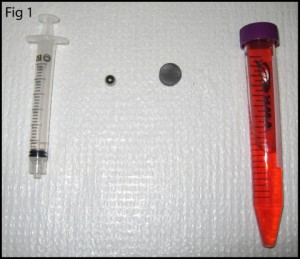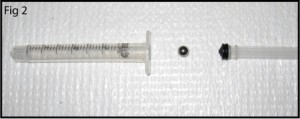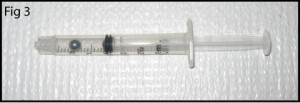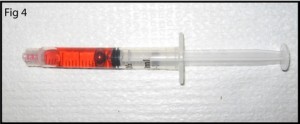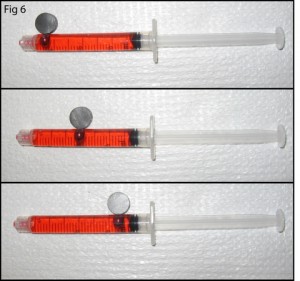Ryan Cooper and Luke Lee
Department of Bioengineering, University of California-Berkeley, Berkeley, California
Why is this useful?
This technique was developed to solve the problem of cell suspensions settling to the bottom of the syringe during the time it took to load them into a device. It is a gentle method to keep mixtures of cells, beads and other particles in suspension.
What do I need?
- 1 Loading Syringe
- 1 Stainless Steel Ball Bearing (recommended diameter 1/3 to 2/3 the inside diameter of the syringe)
- 1 Magnet
What do I do?
1. Clean the ball bearing with acetone followed by alcohol to remove any grease and sterilize its surface.
2. Pull the plunger out of the syringe (in a clean hood if sterile conditions are required) and drop the ball bearing into the tube, then reinsert the plunger (Fig. 2, Fig. 3).
3. Fill the syringe part way with the desired solution (Fig. 4)
4. Hold the syringe upright and tap its side to make the air bubbles inside float to the top of the syringe, then force them out with the plunger.
5. Once the air bubbles are out, finish filling the syringe (Fig. 5).
6. To prevent the solution inside the syringe from settling, simply move the magnet back and forth across the surface of the syringe, dragging the ball bearing back and forth inside the syringe and agitating the solution (Fig. 6).
7. Now you can take as long as you need to load the solution since you can prevent settling. If you do not have a magnet, the solution can be agitated by tipping the syringe and using gravity to move the bearing. Placing the entire syringe pump on a rocker plate could also be employed to move the bearing.


